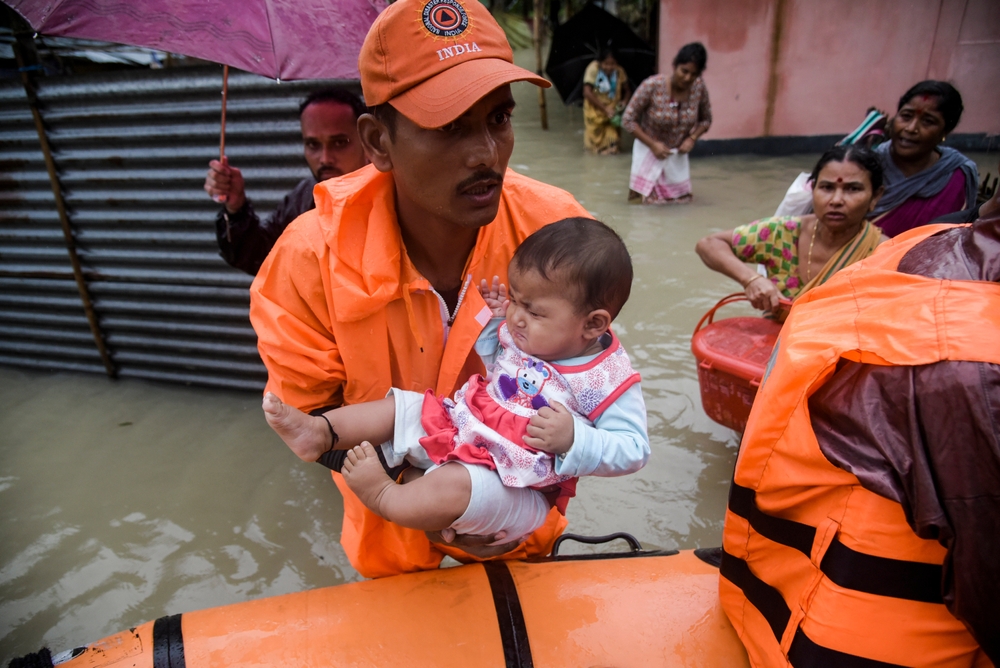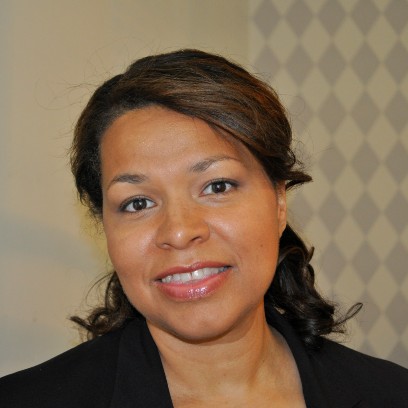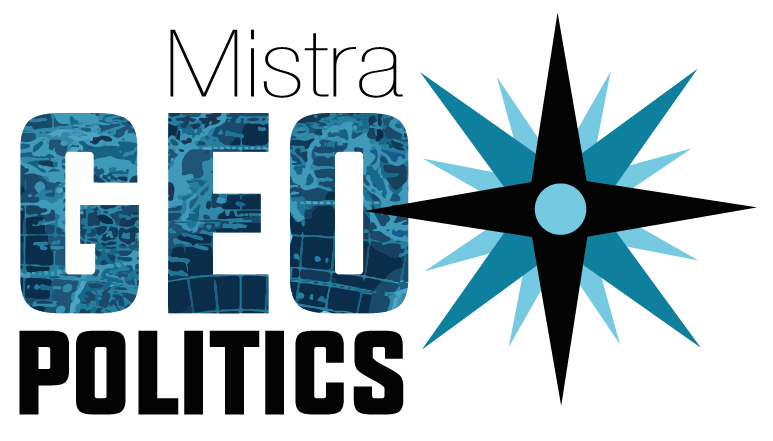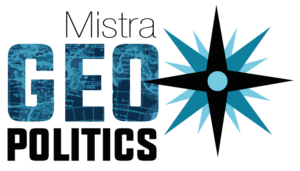Dr Karen Meijer and Anniek Barnhoorn share their insights based on the discussions at the session ‘Humanitarian responses to climate-related shocks in fragile settings: information challenges’ during Stockholm World Water Week 2022, jointly convened by SIPRI, the UN High Commissioner for Refugees (UNHCR), the International Committee of the Red Cross (ICRC), the Swiss Development Agency and Deltares.
Extreme weather events, exacerbated by climate change, have struck every part of the world this year. Many have impacted countries where armed conflict is a present reality or an imminent risk, making already challenging humanitarian situations even more complicated.
As climate change intensifies, humanitarian organizations and their field operations will need a better understanding of how it interacts with conflict and displacement dynamics, as well as its broader societal impacts. And to operationalize this knowledge, they will also need accurate and timely information related to climate, weather and natural resources. Long-term partnerships between humanitarian organizations and information providers could bring a range of advantages.
When climate change meets armed conflict
Many of the countries that are expected to be most heavily impacted by climate change are also experiencing armed conflict. In 2020, a total of 10 out of the 21 active United Nations peace operations were located in such countries.
The direct impacts of climate change can compound other social, economic and political conditions that often characterize fragile and conflict-affected settings. For example, communities in such settings are often less able to adapt to climate change, as it can be unsafe to travel to find alternative pasture, food and water sources, or opportunities to generate income. This can lead to conflict through, for example, increased resource competition, migration and tensions with host communities, recruitment by armed groups offering alternative incomes, or grievances against elite groups who are perceived as denying access to resources.
Climate-induced migrations can also derail fragile peacebuilding processes, by changing local conditions and demographics. SIPRI research on Somalia found that not only were people fleeing to camps to prevent armed groups recruiting their children, but that the recruiters were also deliberately targeting the camps.
Yet whether climate extremes result in disasters, and whether these disasters result in displacement, conflict or violence, is highly dependent on governance. Early-warning systems, and resource-governance and dispute-resolution mechanisms that are considered fair and effective by local communities, can help to minimize the social consequences of climate extremes. However, such systems and mechanisms are often absent in fragile settings. In addition, a recent study confirmed that fragile countries receive much less international climate finance than non-fragile countries. This means that they are less able to do targeted climate change adaptation that could, among other things, reduce climate-related security risks. This in turn increases their need for international humanitarian assistance.

Climate change and humanitarian operations
Many humanitarian operations already face double vulnerabilities linked to climate change and conflict.For example, camps for people displaced by conflict are frequently allocated areas that already have little or no easy access to water resources or are in areas prone to flooding, both of which make them more vulnerable to climatic extremes. Overcrowding at water points and competition for available water between displaced people, host communities and livestock can also inflame tensions in and around the camps. Humanitarian field staff have even been subjected to violence for not providing water to host communities. These problems risk being made worse during droughts and heatwaves, or by long-term reductions in water availability due to climate change.
Reliable information about local climate change impacts and natural resources can support humanitarian actors in their operations. Indeed, the need to ‘increase our ability to understand climate and environmental risks and develop solutions based on reliable data’ is recognized in commitment 4 of the Climate and Environment Charter for Humanitarian Organizations, launched by the International Committee of the Red Cross and the International Federation of Red Cross and Red Crescent Societies in May 2021 and signed by 310 organizations to date.
Three specific areas stand out where information access and use could be enhanced:
- Information on water availability and flood risk could help operations to make contingency plans or choose more appropriate sites for camps. Similarly, early warning of storms and floods can allow timely evacuation of camps, potentially saving many lives.
- Data on water quality, groundwater levels and river flows could be used to demonstrate, to local communities and authorities, as well as to donors, that humanitarian operations are living up to the principle of ‘do no harm’, helping to avoid conflicts over the resource impact of humanitarian operations.
- Longer-term projections of climatic change and vulnerability to extreme weather, when combined with information on social and conflict dynamics, can help to anticipate when and where humanitarian operations might be affected, or even needed, and can support raising funds for these operations.
The case for information partnerships
It can be particularly difficult for humanitarian actors to access meteorological and other environmental data in a timely way in conflict-affected areas. For example, systematic monitoring of climatic conditions or water resources is rare, and the existing data may have gaps, or be out of date, hard to access or unreliable due to a lack of transparency in data collection.
Recent developments in information generation have the potential to overcome some of these problems and could provide invaluable data to support humanitarian decisions and activities. For example, remote sensing and global modelling can provide data on local water availability and flood risks. This data is updated frequently, giving near real-time situation updates, and information providers can also offer reliable projections of future conditions. Such data can complement locally available information to allow for better-informed decisions. And as the companies or organizations gathering and analysing the data are generally not connected to the conflict location—and the data is often available to all parties free of charge—there is lower risk of bias.
For this information to be put to good use by humanitarian actors, it needs to be relevant and accessible, and interpreted in relation to possible courses of action. This concerns not only the content and accuracy of the information but also how it is made available, for example through online platforms, mobile applications or email alerts. Moreover, it concerns the presentation of the information. This could range from raw data to tables and graphs, to concrete advice to take a specific action (e.g. to evacuate an area).
Long-term partnerships could allow information providers to understand humanitarian actors’ needs and thus ensure they provide the right information, by the most useful channels, in forms that humanitarian actors can use quickly and effectively. By the same token, humanitarian actors can get a better understanding of what information is available, how they can use it, and what capacities they will need to develop in-house for processing, visualizing and interpreting the data. Partnerships could also be with intermediary organizations that can bridge gaps between where the role of the information providers ends and that of the humanitarians starts.
For the specific case of disaster preparedness and response—understanding, for example, when and where extreme climate events may hit, how they may interact with existing conflict dynamics, where to evacuate to, and how many people may be in need of assistance—the timeliness of information plays an important role. Having trusted connections and framework agreements in place with major information providers will make it easier to quickly decide on an assignment to provide information in support of a humanitarian response.
Climatic and other environmental factors can increase conflict risks, and the impacts of a current or recent conflict can increase people’s vulnerability to climate-related hazards. In order to manage these risks, humanitarian actors need to consider climatic and environmental conditions alongside information on local social, economic and political dynamics. Understanding how all these factors interact is still an inexact science, and one that relies on local contextual knowledge and experience in the field. This is an area in which important steps have been made but is still developing further. Nevertheless, having access to reliable, timely meteorological and other environmental data can make the job that much easier.
Featured author Karen Meijer
Karen Meijer is a Senior Researcher in SIPRI’s climate change and risk programme. Her research focuses on the role and effectiveness of national and international actors when addressing climate-related security risks. She leads the Mistra Geopolitics Work Package 2 on Sustainable Oceans.

Karen Meijer
For further information, please contact:

Maria Cole




